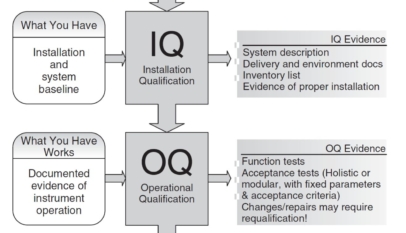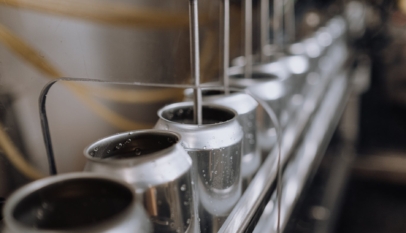“All precautions and measures which are necessary in the production, processing, storage and distribution, in order to assure an unobjectionable, sound and palatable product which is fit for human consumption”
1st Priority – Management Commitment
Vision/Mission of the Sanitation Department
Sanitation is a way of life. Our Vision is to create a working environment that is conducive to the health of all employees of Food Plant by way of giving them an exceptionally hygienic and sanitary place to work.
We will provide our consumers Safe, Fresh and Wholesome products with impeccable Quality. As a team we will achieve outstanding cleaning results consistent to HACCP standards. We will accomplish this by continuously developing our skills and augmenting our efforts to work more efficiently.
Role of the Sanitation Department
- The role of the Sanitation Department is ensure the Quality and food safety of our products by way of preventing the spread of contamination. This is achieved through a constant cleaning and removal of garbage and other deleterious materials around the production area at all times.
- Cleaning and sanitizing the equipment and the environment is essential for the continuity of the operation.
- The set frequency of cleaning according to the Master Sanitation Schedule (MSS) must be followed and documented. The records must be kept for verification and for future reference. Waste disposal and Integrated Pest Management (IPM) are also significant factors in determining the success of the department.
- Overall the Sanitation Department advocates the motto “Clean As You Go“ – meaning, cleaning must always be a part of anything that we do in the plant.
- In a food plant, a planned and implemented sanitation program is synonymous with success of the company.
- In cleaning you can’t go wrong!
Purpose Sanitation
SAFETY of
- Consumer
- Employee
- Environment
QUALITY to ensure
- Fresh / Wholesome of the product
- Longer shelf life of the product
- Consumer Acceptance
- Sales / Profits for the company
Basic Wet Cleaning Steps
1. Pre-Rinse- removes gross soil
2. Wash – Removes residue
3. Rinse – removes the complex of soil and detergent
4. Sanitize
- Kill Microorganisms
Basic Dry Cleaning Steps
- Remove gross soil by vacuum, compressed air, sweeping, scraping, brushing off.
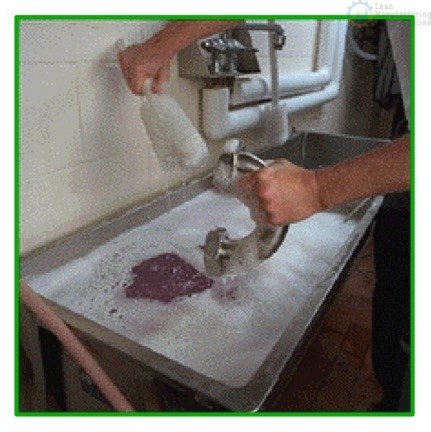
- Sanitize if needed
Methods of Cleaning
Manual Cleaning: Bucket & Brush or Wet Cleaning
- Limited Temperature and Cleaner Activity
Dry Cleaning – Vacuum, Compressed air, sweeping, dust mopping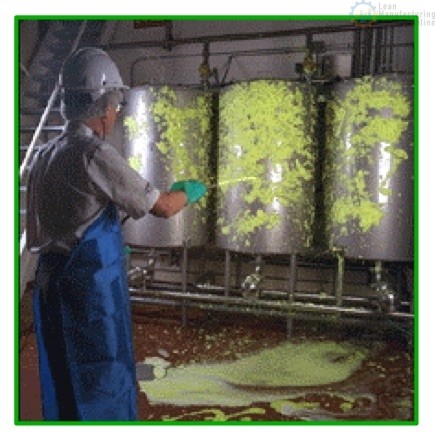
- Mechanical
- High Pressure Rinse
- Assist Manual/Foam Methods
Four Factors of cleaning
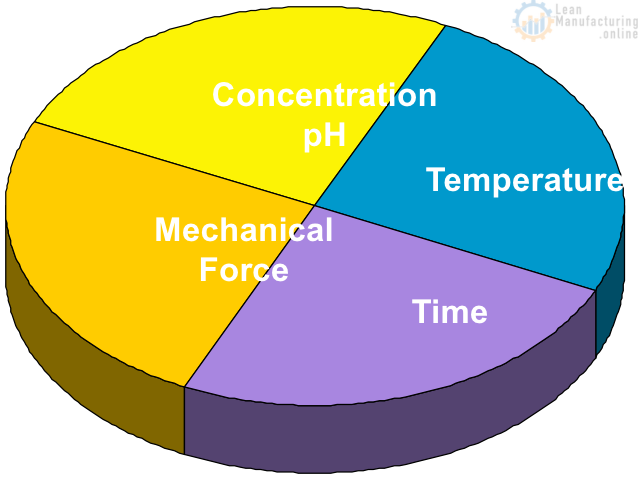
Cleaning is accomplished by considering all the above factors in the pie. One has to compensate the other in order to have a correct balance. If for example you need more time cleaning when the concentration of the detergent is lower than the desired. You also need to elevate the temperature or scrub (mechanical force) more harder.
NATURE OF SOIL
VISIBLE SOIL – are removed by using the correct cleaner
- product residues
- scale and/or milk stones
INVISIBLE SOIL – are removed by using the appropriate sanitizer
- microorganisms (bacteria, yeast,mold,etc.)
CLASSIFICATION OF VISIBLE SOIL
- FAT
- PROTEIN
- CARBOHYDRATES
- MINERAL SALTS
A. FATS
- Present on foods such as milk or mayonnaise
- Common removal method is raising temperature above its melting point and rinse with water
- Chemical removal can be achieved using an dispersant detergent (alkali based or caustic soda)
B. PROTEINS
- Present on foods such as milk and meats.
- Most difficult soil to remove.
- CASEIN – the milk protein, is used in glues because of its adhesive property.
- Protein subjected to higher temperature becomes less soluble and difficult to remove.
- Can be effectively removed using a strong alkali solution or preferably use an acid solution since its often associated with mineral deposits (milkstone).
C. CARBOHYDRATES
- Present on foods such as sugars and starches.
- Quite easy to remove than protein, unless gelatinization or caramelization has occurred.
- Can be removed by either alkali or acid detergent.
D. MINERAL SALTS
- Present on both food and water supplies (Calcium and Magnesium salts).
- Scale formation and Milkstone – combination of minerals and food residues.
- Removal can be achieved by using a phosphoric acid based detergent or chelating agent additive to caustic solution.
FACTS:
Alkali based detergent (CAUSTIC SODA) remove:
- fats
- proteins
- carbohydrates
Acid based detergent remove:
- scale/milkstone
- control water hardness
Types of Detergent
- All purpose Detergent – Dish soap
- Alkali Detergent- Fat Solve – Cleans food residue
- Acid detergent
Alkali Detergent
Fat Solve
- Saponify fat – Convert to soap
- Peptize protein – Breakdown to small pieces
Basic Microbiology
The world of Microorganism
Organisms important in food includes:
- Bacteria – are living things that are neither plants nor animals, but belong to a group all by themselves.
- Yeast
- Molds
- Viruses
Microorganisms can be either beneficial or harmful
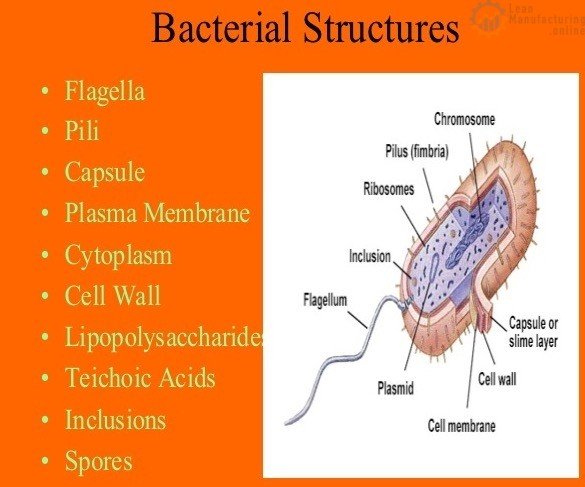
Harmful effect of microorganism
- Spoilage of food
- Food borne toxification
- Food born infection
- Viral borne infection
Beneficial effects
- cheese
- yogurt
- wine
- pickles
- beer
- tea
Factors affecting microbial growth
- pH
- Oxygen
- Moisture
- Temperature
- Nutrients
- Time
Classification of organism based on ability to grow at different temperature
- Psychrophiles – <100C
- Mesophiles – 25-350C
- Thermophiles – > 400C
- Psychrotrophic – can grow under refrigeration temperature
- Thermophilic – Can tolerate high temperature
Fact:
- Most pathogenic bacteria are mesophiles, although a few can grow under refrigeration temperature such as Listeria Monocytogenes, Clostridium Botilinum.
- Organism that spoil refrigerated products are generally psychrotrophic.

Helicobacter pyroli Resposible for Peptic Ulcer Disease.

Discovered in 1926 but not until 1982 proven to cause the disease.
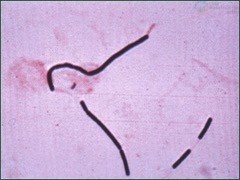 Clostriduim Butilinum
Clostriduim Butilinum
can be found in spoil can food
 Bacillus Antracis or Antrax
Bacillus Antracis or Antrax
can be found in sick animals
Listeria Monocytogenes can be found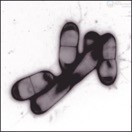
in water and soil, raw meat.
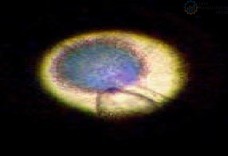 Molds can be found in
Molds can be found in
spoil bread, basement
bathroom.
A bacterium that can produce a deadly toxin and causes approximately 73,000 cases of foodborne illness each year in the U.S.; Sources: meat, especially undercooked or raw hamburger, produce and raw milk.
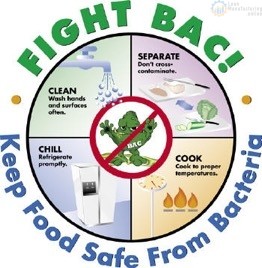
How to kill Bacteria
- Heat treatment – Steam, hot water, direct heating
- Chemical treatment – Sanitizer
- Cleaning – removal of soil that will eventually be spoiled and cause microbial growth.
- Steam Sterilization – 1210C 30 mins.
- Water Sterilization – 1700C for 1hr
- Chemical treatment – Chlorine Sanitizer -200ppm, Quaternary ammonium compound (QUAT) 200 ppm
Why Should Cleaning & Sanitizing Be Carried Out As Two Steps?
- The presence of any residual soil can chemically or physically impair the efficacy of sanitizers
- Soil may shield microorganisms from the necessary direct contact with the sanitizers







